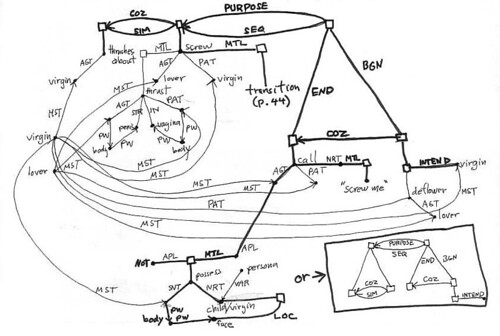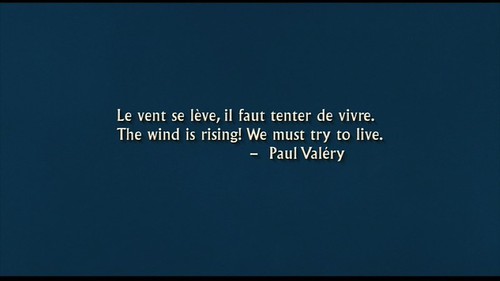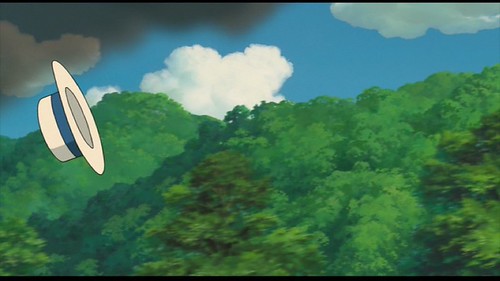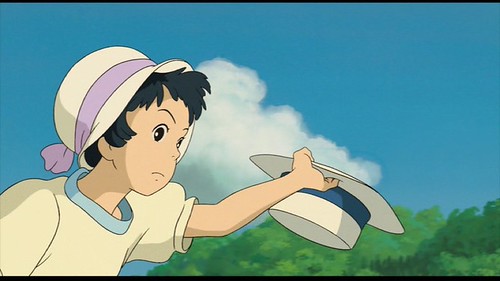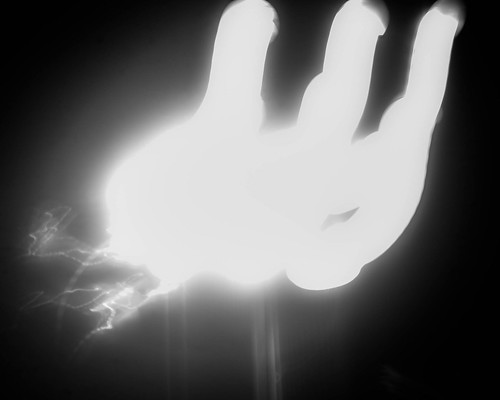Thursday, December 31, 2015
Wednesday, December 30, 2015
Attridge and Staten 3: Formal Features of The Sick Rose
When I began this series of posts I noted that I have long favored an austere approach to texts, but rather than think of “reading” of any kind – “close”, “surface”, or (now) “minimal” – I prefer to think in terms of the analysis and description of formal features. It is to that that I want to turn in this post.
I want to return to a feature I mentioned in my previous post, but did not adequately appreciate there. The rose at the heart of this poem is not some random blossom the poet has spotted in his wanders across the world. It is a Being with which the poet has a relationship, and accordingly he addresses his words to that Being. Thus, as readers we are overhearing this interaction or we are playing the part of the rose in it.
To bring this out I have rewritten the poem so as to replace the second person pronouns with third person pronouns. Since the roses in Blake’s illustration are clearly female, I have used the feminine gender.
The Rose, she is sick.The invisible worm,That flies in the nightIn the howling storm:Has found out her bedOf crimson joy:And his dark secret loveDoes her life destroy.
This poem is flat. There is no drama in that first line, and no strong sense of return in lines four and eight, where the rose is again mentioned.
The drama of the opening address and the sense of return in the second stanza, they depend on the social space opened up by the use of the second person pronoun. In the entirely third person poem, the rose and the worm are equally things out there in the world. In the second-third person poem, they are not. They exist differently in this discourse.
A Four Part Trajectory
The poem evolves through a trajectory having four segments. Each segment should probably have a functional name, but as I have only one example I don’t quite what they should be. No matter, I’ll just make some up for the sake of discussion: 1) the address (line 1), 2) the excursion (lines 2-4), 3) the return (lines 5-6), and 4) the exit (lines 7-8).
The address is, obviously the first line. I call the next section of the trajectory the excursion because it takes us somewhere else? Where’d this worm come from? What does it have to do with the rose? Are we still in the same poem? The return brings us back to the rose, back, in effect, to home base in social space. And the exit takes us out of the poem all together. That’s obviously not all that it does, but that is something that it must. It must close the poetic space.
Now, consider those oppositions that Staten mentioned. The excursion belongs entirely to “howling-storm-worm”; that’s all that’s there in that section of the poem. The poem continues with the worm in the return (“has found out”) but the return quickly becomes dominated by the other pole of the opposition: “crimson-joy-rose”.
What are we going to call this opposition? Is it between good and evil, beauty and beastliness, perfection and destruction? None of the above. Or all of them, plus a whole bunch more. As my system suggested to me it is a cosmic opposition, meant to suggest the cosmos in its tension. Incidentally, the juxtaposition of this oppositional complex in the excursion and in the return dispenses of the problem about the worm’s invisibility: is it intrinsically invisible or only impossible to see amid all the nasty weather? Rather, its invisibility contrasts it with the crimson of the rose(‘s bed).
This brings us to the final segment of our trajectory, the exit. What happens with our oppositions there? The most obvious answer is that “crimson-joy-rose” becomes “life” and “howling-storm-worm” becomes “dark secret love”. The latter destroys the former – that’s what the poem says. But it is not at all clear to me that the destruction of an ordinary rose by an ordinary pestilential worm is the same kind of thing as the destruction of a cosmic rose by a cosmic worm. And I note that the poet is still, in this final line of the poem, addressing his attention to the rose, not to the worm.
Finally, I want to return to those pronouns. Let’s call the places there the poet address the rose the contact points. There are two contact points in the first line (“O Rose” and “thou”), one in the fifth line, marking the return, and one in the last line, the exit. That’s the core of the poem.
Whether this last run of thinking is best seen as “minimal reading” or “formal analysis and description” is not obvious to me. And, here and now, I don’t much care. We can discuss it later. What’s important that we have a sense of a coherent and flowing gesture in, well, poetic space, one encompassing four segments arrayed over two sentences and two quatrains.
Recap
All of that accords reasonably well with the passage Staten quoted from Attridge’s The Singularity of Literature (66).
The simplicity of the strongly articulated phrasal movement contributes to this experience. The arresting initial statement, “O Rose, thou art sick:” – one line, two beats – is followed, after a pregnant pause, by an extension that takes up the seven remaining lines. This extended elaboration of the opening line is made up of three lines of anticipation, followed by the stanza break which further heightens the tension, and then a four-line arrival. And those three lines of anticipation form a crescendo of intensity – “The invisible worm / That flies in the night, / In the howling storm,” – while the stanza of arrival varies the 1:3 balance of the first stanza by taking the reader through two climactic statements of equal length: “Has found out thy bed / Of crimson joy; // And his dark secret love / Does thy life destroy.” (69-70)
To that I would like to recall Staten’s own observation about the seventh line, though not for what it says about the seventh line alone:
It is, for one thing, the only line with three major content words (Rose-sick; invisible-worm; flies-night; howling-storm; found-bed; crimson-joy; dark-secret-love; life-destroy).
Finally, there is the stuff of traditional prosody, lines, feet, beats, rhyme and the rest. All that is entailed in the poem’s form.
* * * * *
The question that’s hanging in the air over my head is of course: did Blake write other poems on this plan, this particular four-part trajectory? Have others? I don’t know. As I said at the outset, I’m neither a Blakean nor an expert in poetry. I’m a theoretician with a fondness for examples.
It would be most useful to have other examples to clarify the analysis – other examples of the same form, or of similar forms. Indeed, without other examples we don’t know quite know what the form is. Does it have to be draped over two quatrains, or is that an incidental feature of gesture? The only way to answer such a question is to consider other cases and see what makes sense in that context.
The End of Science, Redux
John Horgan's 1996 book, The End of Science, has been republished. Horgan discusses it with Robert Wright:
Here's my essay review, Pursued by Knowledge in a Fecund Universe, in 1997. And here's the abstract:
In The End of Science John Horgan, himself a devotee of science, argues that the stock of fundamental scientific truths is limited and that we have discovered most of them. What has come to an end, I argue, is a certain view of the world which sees reality as reducible to simple laws about simple systems underpinning the superficial complexity of phenomenal experience. On the contrary, reality is fundamentally complex and reductionism is doomed. The universe is fecund in that it has evolved multiple Realms of Being, with the later ones being implemented in the former
Monday, December 28, 2015
Japan and Korea reach agreement about "comfort women"
Writing in The New York Timea, Choe Sang-Hun reports:
SEOUL, South Korea — South Korea and Japan announced on Monday that they had reached a “final and irrevocable resolution” of their decades-old historical dispute over Korean women who were forced to serve as sex slaves for Japan’s Imperial Army in the early 20th century.The landmark agreement will remove one of the most intractable logjams in relations between South Korea and Japan, its former colonial master, both crucial allies to the United States.The so-called comfort women have been the most painful legacy of Japan’s colonial rule of Korea, which lasted from 1910 until Japan’s World War II defeat in 1945. Forty-six former comfort women are still alive in South Korea.“The Japanese government bears a heartfelt responsibility” for recruiting comfort women “with the involvement of its military” and for “severely injuring the honor and dignity of many women,” the foreign minister of Japan, Fumio Kishida, said on Monday, reading the agreement during a news conference in Seoul.Mr. Kishida also said that his boss, the hawkish Prime Minister Shinzo Abe, had expressed “apologies and remorse from his heart.”
Sunday, December 27, 2015
Falling Apart in Philly
It's been a slog these past couple weeks. Lots of good things happening, blog posts I like, the Arches project heating up, other things. But still, the energy just hasn't been there. Then last Monday I came down with a cold. Not a particularly bad one, just a PITA.
A couple of days ago I launched a new blog project, working my way through Attridge and Staten on The Craft of Poety. That was more wearing than I'd expected; good, but wearing. Friday afternoon, Christmas day, I headed to Philadelphia to see my sister, an annual trip. On the way down the left wiper-blade came loose and stopped functioning. So I had to find a wrench and tignten it up. Not a big job, but the wrench I was able to find wasn't very good and it was dark outside, so I didn't know what I was doing. Still I managed to get it fixed and was on my way.
Blowing your nose while steering a car at 60 or 65 mph on the turnpike is no fun. But I managed to do it. And I limped into South Philly at about 8pm and my sister and I exchanged presents and ate a nice meal.
But the cold was a bother, and seemed to get worse during the night. Plus I decided to stay in Philly a few extra days to get my brakes looked at–they were shuddering quite a bit when I used them. Something's not lined up right. But I figured that at least I could do another post in the Attridge and Staten series. I know pretty much what I wanted to say. No big deal.
I didn't get around to it. I just lazed about and checked online every hour or so. For all practical purposes, I was falling apart. I just hadn't given myself permission to do so.
That was yesterday. Today I made it official: I'm falling apart. Just what that means and for how long, I don't know. Tomorrow I take my car to my sister's trusted mechanic. I plan to head home to Hoboken on Tue. Will I get it together or remain in pieces at that time? Who knows?
Thursday, December 24, 2015
Tuesday, December 22, 2015
Monday, December 21, 2015
Attridge and Staten 1: What is Minimal Reading?
A professor of mine from graduate school, Charlie Altieri, just suggest I might like:
Dereck Attridge and Henry Staten, The Craft of Poetry: Dialogues on Minimal Interpretation, Routledge 2015.
I’ve ordered it and plan, provisionally at least, to blog my way through it. The first chapter, however, was published online in 2008:
Dereck Attridge and Henry Staten, “Reading for the Obvious: A Conversation”, World Picture 2, Autumn 2008, http://www.worldpicturejournal.com/WP_2/Attridge_Staten.html
So I don’t have to wait for the book to arrive before I begin commentary.
I figure this first chapter is good for two blog posts. In this first one I’ll comment on observations they’ve made about what they’re calling “minimal reading”. In the second post I’ll extend some of the observations they’ve made about their example text, William Blake’s, The Sick Rose.
I apologize ahead of time if my comments seem a bit picky. I have a great deal of sympathy for minimal reading as its austerity brings it close to my own hobbyhorse, the description of form. But there is a difference in emphasis and, ultimately I suspect, direction. I want to bring that out.
The article seems to be an actual dialogue, undertaken through email. Thus I will be indicating who said what by using their initials. Occasionally there is an ellipsis in their text, indicated in the usual way. In those cases where I introduce an ellipsis into a quoted passage I’ll indicated that by enclosing the ellipsis dots by angle brackets, thus: […].
It’s Not About The Critic’s Ingenuity
Late in the dialogue Henry Staten observes:
[…] I’ve found that most good poems (including The Waste Land, as Eliot himself belatedly realized) don’t need a great deal of the associational icing that we literary critics bring to them. Their power can be reconstituted from the ground up, out of the common language and common experience, together with a quite minimal and general cultural literacy.
To that I would add that the profession has come to regard that “associational icing” as comfortably ensconced in the Great Big Always-Already, as though people have been interpreting literary texts since the dawn of time and that such interpretation is an inherent aspect of literary culture. I’ve quoted a few passages illustrating that assumption in a recent post, Literary Criticism and Spiritual Crisis (?) [1]. The assumption, of course, is wrong. Interpretation only became common practice after WWII and even then there was a battle over it. Thus you have J. Hillis Miller giving an interview where he says his teachers at Harvard in the early 1950s couldn’t give a decent reading of a poem [2].
Now let’s go to the beginning of the article, with Derek Attridge writing to Staten:
As you know, I’ve been trying for a while to articulate an understanding of the literary critic’s task which rests on a notion of responsibility, derived in large part from Derrida and Levinas, or, more accurately, Derrida’s recasting of Levinas’s thought, one aspect of which is an emphasis on the importance of what I’ve called variously a “literal” or “weak” reading. That is to say, I’ve become increasingly troubled by the effects of the enormous power inherent in the techniques of literary criticism at our disposal today […] The result of this rich set of critical resources is that any literary work, whether or not it is a significant achievement in the history of literature, and whether or not it evokes a strong response in the critic, can be accorded a lengthy commentary claiming importance for it. What is worse, the most basic norms of careful reading are sometimes ignored in the rush to say what is ingenious or different. (The model of the critical institution whereby the critic feels obliged to claim that his or her interpretation trumps all previous interpretations is clearly part of the problem here, and beyond this the institutional pressure to accumulate publications or move up the ladder.) We may be teaching our students to write clever interpretations without teaching them how to read...
I agree with the spirit, but I’ve got some problems with specific details. It’s not clear to me just what kind of restriction Staten has in mind when he, quite correctly, points out that we’re got the tools to write commentary on any literary work regardless of cultural significance or personal resonance. In my pose as a Martian, which I asserted in my recent open letter to Charlie Altieri [3], everything human is foreign to me and thus I do not assign a priori privilege to any set of texts, artifacts, or practices, though I recognize that earthlings make such distinctions and I have examined so-called canonical texts, some with considerable care.
Saturday, December 19, 2015
"Comfort Women" and the Japanese State
Japan annexed Korea in 1910 and occupied it though the end of World War II. During the war tens to hundreds of thousands of women were forced into sex slavery for Japanese military personnel. They are euphemistically called "comfort women". It is a politically sensitive issue to this day and the details of what happened are in dispute. In 2013 a Korean Scholar, Park Yu-ha, published Comfort Women of the Empire, which has become quite controversial. Thus, writing in The New York Times, Cho Sang-Hung reports:
In February, a South Korean court ordered Ms. Park’s book, “Comfort Women of the Empire,” redacted in 34 sections where it found her guilty of defaming former comfort women with false facts. Ms. Park is also on trial on the criminal charge of defaming the aging women, widely accepted here as an inviolable symbol of Korea’s suffering under colonial rule by Japan and its need for historical justice, and she is being sued for defamation by some of the women themselves.
This interests me because the "comfort women" issue is one raised by Inkoo Kang – "the orchestration of mass rape" – in her condemnation of Miyazaki's The Wind Rises, though in a later interview she acknowledges that Miyazaki himself is an activist on the issue [2]. What particularly interests me about the controversy over Park's book is the role of the Japanese state:
As she researched her book, combing through a rich archive in South Korea and Japan and interviewing surviving comfort women, Ms. Park, 58, said she came to realize that such a sanitized, uniform image of Korean comfort women did not fully explain who they were and only deepened this most emotional of the many disputes between South Korea and Japan.In trying to give what she calls a more comprehensive view of the women’s lives, she made claims that some found refreshing but many considered outrageous and, in some cases, traitorous.In her book, she emphasized that it was profiteering Korean collaborators, as well as private Japanese recruiters, who forced or lured women into the “comfort stations,” where life included both rape and prostitution. There is no evidence, she wrote, that the Japanese government was officially involved in, and therefore legally responsible for, coercing Korean women. [...]Ms. Park’s book, published in Japan last year, won awards there. Last month, 54 intellectuals from Japan and the United States issued a statement criticizing South Korean prosecutors for “suppressing the freedom of scholarship and press.” Among them was a former chief cabinet secretary in Japan, Yohei Kono, who issued a landmark apology in 1993 admitting coercion in the recruitment of comfort women.Even then, however, Mr. Kono noted that the recruiting had been conducted mainly by private agents working at the request of the Japanese military, and by administrative and military personnel. For outraged South Koreans, the caveats rendered the apology useless.This month, 190 South Korean scholars and cultural figures issued a statement supporting what Ms. Park had tried to do in her book, if not everything written in it. They called her indictment an “anachronistic” attempt to “keep public opinion on comfort women under state control.”
Friday, December 18, 2015
Has physics outgrown Popperian falsification?
Physics has been in trouble for awhile because theories (e.g. string theory in all its forms) now seem to be beyond empirical test. What to do? Is Popper out and Bayes in? – A question posed at a recent meeting of physicists and philosophers in Germany:
Of course, it is not physics so much that interests me. It is literature, culture, and the mind. How do we determine objective truth about such phenomena?But, as many in Munich were surprised to learn, falsificationism is no longer the reigning philosophy of science. Massimo Pigliucci, a philosopher at the Graduate Center of the City University of New York, pointed out that falsifiability is woefully inadequate as a separator of science and nonscience, as Popper himself recognized. Astrology, for instance, is falsifiable — indeed, it has been falsified ad nauseam — and yet it isn’t science. Physicists’ preoccupation with Popper “is really something that needs to stop,” Pigliucci said. “We need to talk about current philosophy of science. We don’t talk about something that was current 50 years ago.”
Nowadays, as several philosophers at the workshop said, Popperian falsificationism has been supplanted by Bayesian confirmation theory, or Bayesianism, a modern framework based on the 18th-century probability theory of the English statistician and minister Thomas Bayes. Bayesianism allows for the fact that modern scientific theories typically make claims far beyond what can be directly observed — no one has ever seen an atom — and so today’s theories often resist a falsified-unfalsified dichotomy. Instead, trust in a theory often falls somewhere along a continuum, sliding up or down between 0 and 100 percent as new information becomes available. “The Bayesian framework is much more flexible” than Popper’s theory, said Stephan Hartmann, a Bayesian philosopher at LMU. “It also connects nicely to the psychology of reasoning.”
Thursday, December 17, 2015
Literary Studies from a Martian Point of View: An Open Letter to Charlie Altieri
I of course, am the Martian, a conceit I’ll explain in due course.
I took a course in modern poetry with Charlie Altieri in the fall of 1974, my second year at SUNY Buffalo. I don’t know why I signed up for Charlie’s course, probably for the exposure. I’d come to Buffalo for a very specific purpose and with only a weak background in English and American literature. I picked my courses in part to remedy that.
That same semester I was also studying with David Hays in linguistics. On the one hand I was enrolled in a course, Linguistics as a Focus of Intellectual Integration, in which we read books by William Powers (control theory and psychology), Talcott Parsons (sociology), Northrup Frye (literary criticism), Ernst Gombrich (art history), Gregory Bateson (systems, mind, ecology), and most likely someone else. But Hays, a computational linguist, was also tutoring me in his semantic model.
I used that semantic model to examine some passages from William Carlos Williams, Patterson, Book V, and submitted that (rather long) paper to both Altieri and Hays. That’s the kind of place Buffalo was in those days. Here’s one of the many diagrams from that paper:
Looking at it now I’m appalled at how sloppy it is. But I’m sure I was proud of it at the time, and even thought it a bit stylish. I’d bought a set of technical fountain pens (Rapidograph) just so I could draw such diagrams. These days I’d use the computer, probably Omnigraffle, to draw something that complex.
I remember Charlie making two verbal comments to me about it (above and beyond what he wrote in the margins): 1) that I was using literature as a vehicle for elaborating other interests, and 2) like I. A. Richards I had moved beyond literature to a more general interest in language and the mind. The second was flattering, but I bridled at the first, though it was true. However, it is by no means clear, then or now, in just what the proper study of literature consists.
Anyhow, here’s an open letter to Charlie. Why Charlie? That I studied with him at a critical point in my career is sufficient reason. But there is one other thing: Charlie takes a philosophical approach and is conversant in both Continental and Anglo-American idioms. Despite a spate of dumb remarks from prominent physicists, philosophy remains intellectually necessary.
I start by recounting, for the 4th time I believe [1], my early intellectual history. After that I talk about my analytic work on ring-composition and then on to other things.
* * * * *
Hi Charlie,
I’ve been looking at some of the stuff on your website and notice that you’ve taken to posing as an old scholar reflecting on the profession. That’s a pose I know well, and have explored it myself in this and that, except that here and now I’m pretending to be a Martian. It’s a metaphor of course, but not, as I’ll explain, a mere metaphor. And like you I’m suspicious about the “materialist” allegories that have come to dominate the field, though I’m not so bothered by the erasure of authors – but that particular issue would take me a bit far afield.
From Johns Hopkins to Buffalo
I’ve spent a great deal of time thinking about the profession, by which I mean academic literary criticism, and wondering about its future. On the one hand I’m amazed at the variety of work done in the name of (academic) literary criticism. I certainly can’t get a grip on the full range. Can anyone? Someone who’s chaired a large and diverse department, or served as editor for a generalist journal, they’d have seen a wide range of work parade before them over the years. But really grasp it all?
Moreover I look at the discipline as an outsider. I’m an outsider in the sense that I don’t hold an academic appointment and haven’t had one since I failed to make tenure at RPI back in 1985. But I’m hardly the only capable scholar – or whatever it is that I am – to operate outside the academy. I’m an outsider in a deeper and more fundamental sense and have been, I realize in retrospect, ever since I completed my MA degree at Hopkins in 1972, ever since I wrote that MA thesis on “Kubla Khan”.
That is to say, I was an intellectual outsider when I arrived at Buffalo in the fall of 1973 for the purpose of getting the credential, the PhD, that is the all but necessary requirement for an academic post. At that time it was obvious that my MA thesis was a very unusual piece of work. I had a sense that, though it was my work – I’d written the thing, hadn't I? – I didn’t really know what I’d done. For knowledge is ineluctably social – there are no private languages – and it wasn’t at all clear just which intellectual community could accommodate that work.
It was quite unlike anything that had been written about “Kubla Khan”. And while it had obvious antecedents in structuralism and in linguistics, in various respects it was quite different from what Jakobson, Lévi-Strauss, and others had done with poetry. What was it, a duck or a swan? Who knew how to answer the question?
When I arrived at Buffalo I was apprehensive about whether I’d be able to do the work I wanted to do, not that I had any clear idea of what that was. All I knew is that I wanted to somehow make sense of the structure I’d found in that poem. So I showed the thesis around, to Mac Hammond, my advisor, to Al Cook who was, well, Al Cook, and in my second year, to you. Everyone accepted it as well, I don’t know what, but it was in some way accepted. And, with the help of another graduate student, Ralph Henry Reese, who’d worked with David Hays, I managed to find my way to the Linguistics Department where I joined Hays’s research group in computational linguistics.
Back then, the world seemed wide open – “it was the age of wisdom, it was the age of foolishness, it was the epoch of belief, it was the epoch of incredulity, it was the season of Light, it was the season of Darkness, it was the spring of hope, it was the winter of despair, we had everything before us” – and who knew how the discipline would develop. It was worth a shot.
Nowhere to run, nowhere to hide
As I've said previously, one of the arguments about posting to Academia.edu is that one shouldn't because, CAPITALISM! Alas, capitalism is pervasive. An old song by Martha and the Vandellas speaks to the issue:
Here's the lyrics:
Nowhere to run, baby nowhere to hideI got nowhere to run, baby nowhere to hideIt's not love, I'm running fromIt's the heartaches, I know will come'Cause I know, you're no good for meBut you've become a part of meEverywhere I go, your face I seeEvery step I take, you take with me, yeahNowhere to run, baby, nowhere to hideGot nowhere to run, baby nowhere to hideI know you're no good for me, nowBut free of you I'll never be, noEach night as I sleep into my heart you creepI wake up feeling sorry I met you, hoping soon that I'll forget youWhen I look in the mirror and comb my hairI see your face just a-smiling thereNowhere to run, baby nowhere to hideGot nowhere to run, baby nowhere to hideI know you're no good for meBut free of you, I'll never beHow can I fight a lover that's sugar sweetWhen it's so deep, so deep, deep inside of meMy love reaches so high, you can't get over itSo wide, you can't get around, noNowhere to run, baby nowhere to hideGot nowhere to run, baby nowhere to hideI know you're no good for meBut free of you I'll never beNowhere to run to, baby nowhere to hideGot nowhere to run to, baby nowhere to hideNowhere to run
Songwriters
Holland, Edward, Jr. James / Dozier, Lamont Herbert / Holland, Brian
Published by
Lyrics © Sony/ATV Music Publishing LLC, Warner/Chappell Music, Inc., Kobalt Music Publishing Ltd., Universal Music Publishing Group
Wednesday, December 16, 2015
To Academia.edu or Not Academia.edu, that is the question
There's a debate going on about whether or not scholars should participate in Academia.edu. The case against it is: because, capitalism! That is, it is a profit making venture and so doesn't have 'our' best interests at heart. But then, do existing colleges and universities?
Gary Hall is one source of this discussion. His Should This Be the Last Thing You Read on Academia.edu? has, at this point, been seen almost 12,000 times. A paragraph:
Of course, the majority of academics who are part of Academia.edu’s social network are the product of the state-regulated, public higher education system, as is their research (a system, it should be said, from which public funding is steadily being withdrawn). But just as Airbnb and Uber are parasitic on the public ‘infrastructure and the investment’ that was ‘made by cities a generation ago’ (roads, buildings, street lighting, etc.), so Academia.edu has a parasitical relationship to the public education system, in that these academics are labouring for it for free to help build its privately-owned for-profit platform by providing the aggregated input, data and attention value. We can thus see that posting on Academia.edu is not ethically and politically equivalent to making research available using an institutional open access repository at all.
I am currently participating in two discussions of the matter at Academia.edu. One of them is hosted by Eileen Joy, publisher of Punctum Books: Open Letter to Rosemary Feal, Kathleen Fitzpatrick, and the Modern Language Association. The other is hosted by Tim Markey: On Staying With academia.edu.
I've expressed by own general views on the issue in the first two sections of my working paper, Personal Observations on Entering an Age of Computing Machines.
Tuesday, December 15, 2015
YouTube success can be a financial trap
Allison and I have turned down products for all kinds of reasons—the CEO made sexist comments; it isn’t something we’d really use, like beard oil—but it all comes down to pleasing the viewers. The con is loss of income, the pro is the trust of our fans.Sometimes, this coveted intimacy can ding our bank accounts. In a 2013 speech, Chairman of the Council of Economic Advisers Alan Krueger said the increase of knowledge about a performer’s life and beliefs due to social media has led to not being able to charge as much for concert tickets. Besides, he said, “most people do not want to think of their favorite singer as greedy,” he said. “Would you rather listen to a singer who is committed to social causes you identify with, or one who is only in it for the money?” If an artist—a YouTuber or Instagram star, for instance—is committed to championing the little guy, they can’t very well look like they’re taking money for their work.YouTuber Anna Akana, fed up with comments calling her a “sellout,” posted a video in June explaining how without brand deals, YouTubers can’t survive. Akana has hit 1 million subscribers by creating a podcast, designing a clothing line, and yes, taking money for sponsored videos. Some fans understood and defended YouTubers needing to make money. Others vowed never to watch her again. It’s a terrifying risk whenever you post a branded video.
H/t Tyler Cowen.
Wind and Chance, Design and Mechanism, in The Wind Rises
I’ve mentioned the film’s title in other posts, but Miyazaki is so insistent on it that I decided it required a post of its own. But not entirely its own. I want to juxtapose the rising wind with another motif that is prominent in the film, design and mechanical detail.
The Rising Wind
Miyazaki tells us about his title as soon as the film starts. Immediately after a shot of the title he tells us where it came from:
00:00:33
The Japanese version, of course, has a translation into Japanese. Immediately after the film ends, and before he runs the end credits, Miyazaki has a shot telling us that the film is “A Tribute to Jiro Horikoshi and Tatsuo Hori”. It is in Hori’s novel, The Wind has Risen (風立ちぬ – Kaze Tachinu), that Miyazaki got the story of a woman with tuberculosis on which he based his fictional account of the real Horikoshi’s wife.
But, as we’ve already seen in How Caproni is Staged in The Wind Rises, Miyazaki repeats the title in the film itself, both literally, and in imagery. It enters the film during the Kanto Earthquake sequence, which starts with Horikoshi on the train back to Tokyo. Young Naoko Satomi utters it as she notices the wind – Le vent se lève. At the same time, a gust carries Horikoshi’s hat away
00:14:24
and she manages to catch it, though she almost falls from the train herself.
00:14:25
They then have a conversation in which she repeats the opening of the line – Le vent se lève – and Horikoshi completes it: il faut tenter de vivre. A few minutes later, after the earthquake has struck and after Horikoshi has made his way to his college after helping Naoko and her maid, Caproni repeats the whole line as he scraps the film of the failed flight of his dream plane.
In this one sequence, then, Miyazaki has 1) staged the first meeting between his protagonist and his future wife, 2) linked the film’s title phrase both to that meeting and to, 3) his protagonist’s virtual mentor, Caproni, and done it all 4) in the context of disaster, the earthquake and the failed flight. He has done this both verbally and in the events he depicts. Nor is not only the gust of wind that takes Horikoshi’s hat, but also the winds that fan the flames in Tokyo – in the course of which, incidentally, Caproni asked Horikoshi whether or not the wind was still rising.
The merelogical fallacy in neuroscience
J Exp Anal Behav. 2005 Nov; 84(3): 683–692.
PMCID: PMC1389787
Naming Our Concerns about Neuroscience: A Review of Bennett and Hacker's Philosophical Foundations of Neuroscience
Reviewed by David W Schaal
M. R. Bennett and P. M. S. Hacker
Philosophical foundations of neuroscience.
2003. Malden, MA: Blackwell Publishing.
Philosophical foundations of neuroscience.
2003. Malden, MA: Blackwell Publishing.
Abstract
Bennett and Hacker use conceptual analysis to appraise the theoretical language of modern cognitive neuroscientists, and conclude that neuroscientific theory is largely dualistic despite the fact that neuroscientists equate mind with the operations of the brain. The central error of cognitive neuroscientists is to commit the mereological fallacy, the tendency to ascribe to the brain psychological concepts that only make sense when ascribed to whole animals. The authors review how the mereological fallacy is committed in theories of memory, perception, thinking, imagery, belief, consciousness, and other psychological processes studied by neuroscientists, and the consequences that fallacious reasoning have for our understanding of how the brain participates in cognition and behavior. Several behavior-analytic concepts may themselves be nonsense based on thorough conceptual analyses in which the criteria for sense and nonsense are found in the ways the concepts are used in ordinary language. Nevertheless, the authors' nondualistic approach and their consistent focus on behavioral criteria for the application of psychological concepts make Philosophical Foundations of Neuroscience an important contribution to cognitive neuroscience.
Keywords: cognitive neuroscience, conceptual analysis, dualism, mereological fallacy, reductionism
Monday, December 14, 2015
Singing Delays the Onset of Infant Distress
Mariève Corbeil, Sandra E. Trehub, Isabelle Peretz. Singing Delays the Onset of Infant Distress. Infancy, 1–19, 2015.
Copyright © International Congress of Infant Studies (ICIS)
ISSN: 1525-0008 print / 1532-7078 online
DOI: 10.1111/infa.12114
Abstract: Much is known about the efficacy of infant-directed (ID) speech and singing for capturing attention, but little is known about their role in regulating affect. In Experiment 1, infants 7–10 months of age listened to scripted recordings of ID speech, adult-directed speech, or singing in an unfamiliar language (Turkish) until they met a criterion of distress based on negative facial expression. They listened to singing for roughly twice as long as speech before meeting the distress criterion. In Experiment 2, they were exposed to natural recordings of ID speech or singing in a familiar language. As in Experiment 1, ID singing was considerably more effective than speech for delaying the onset of distress. We suggest that the temporal patterning of ID singing, with its regular beat, metrical organization, and tempo, plays an important role in inhibiting distress, perhaps by promoting entrainment and predictive listening.
The Time Has Come for a Department of Peace
Over at 3 Quarks Daily I’ve posted The United States Needs a Department of Peace. The idea was first proposed in 1793 by Dr. Benjamin Rush, one of the signers of the Declaration of Independence, and has been frequently proposed over the last century (Wikipedia). Starting in 1935 a number of bills have been introduced introduced into Congress, most recently by Dennis Kucinich as H.R. 808. It was re-introduced in the 114th Congress on February 26, 2015 by Barbara Lee as H.R. 1111:
I devote most of my 3QD post to the text Rush’s proposal, but introduce it with some commentary on the allegorical paintings he proposes for the room that would house his proposed Peace Office. He also proposed that the following assertions be posted on a sign above the door to the War Office:
1. An office for butchering the human species.2. A Widow and Orphan making office.3. A broken bone making office.4. A Wooden leg making office.5. An office for creating public and private vices.6. An office for creating public debt.7. An office for creating speculators, stock Jobbers, and Bankrupts.8. An office for creating famine.9. An office for creating pestilential diseases.10. An office for creating poverty, and the destruction of liberty, and national happiness.
Net buzz and hate crimes
Evan Soltas and Seth Stephens-Davidowitz writing in The New York Times:
Hate crimes may seem chaotic and unpredictable, a consequence of random neurons that happen to fire in the brains of a few angry young men. But we can explain some of the rise and fall of anti-Muslim hate crimes just based on what people are Googling about Muslims.The frightening thing is this: If our model is right, Islamophobia and thus anti-Muslim hate crimes are currently higher than at any time since the immediate aftermath of the Sept. 11 attacks. Although it will take awhile for the F.B.I. to collect and analyze the data before we know whether anti-Muslim hate crimes are in fact rising spectacularly now, Islamophobic searches in the United States were 10 times higher the week after the Paris attacks than the week before. They have been elevated since then and rose again after the San Bernardino attack.According to our model, when all the data is analyzed by the F.B.I., there will have been more than 200 anti-Muslim attacks in 2015, making it the worst year since 2001.
They observe:
We often think of Google as a source from which we seek information directly, on topics like the weather, who won last night’s game or how to make apple pie. But sometimes we type our uncensored thoughts into Google, without much hope that Google will be able to help us. The search window can serve as a kind of confessional.There are thousands of searches every year, for example, for “I hate my boss,” “people are annoying” and “I am drunk.” Google searches expressing moods, rather than looking for information, represent a tiny sample of everyone who is actually thinking those thoughts.
Furtherore:
“Public polls, properly done, describe what a representative sample of Americans believe and feel about an issue,” Paul Sniderman, a political scientist at Stanford, explained in an email. “Google searches answer a different question: What do people excited enough by an issue to comment on it think and believe about it? The answer to this question, just because it is unrepresentative of the public as a whole, may be a better bet to predict hate crimes.”
Recent events:
Searches for information about Islam and Muslims did rise after the attacks in Paris and San Bernardino. Yet they rose far less than searches for hate did. “Who is Muhammad?” “what do Muslims believe?” and “what does the Quran say?” for instance, were no match for intolerance. In the days following the San Bernardino attacks, for every American concerned with “Islamophobia,” another was searching for “kill Muslims.” While hate searches were about 20 percent of all top searches about Muslims before the attack, more than half of all search volume about Muslims became hateful in the hours that followed it.It is not just that hatred against Muslims is extremely high today. It’s that it’s exceptional compared with prejudice against every other group in the United States. [...]Before the Paris attacks, 60 percent of Americans’ searches that took an obvious view of Syrian refugees saw them positively, asking how they could “help,” “volunteer” or “aid.” The other 40 percent were negative and mostly expressed skepticism about security. After Paris, however, the share of people opposed to refugees rose to 80 percent.
Moral suasion doesn't work very well. After Obama's speech about San Bernadino:
Mr. Obama also said, “It is our responsibility to reject religious tests on who we admit into this country.” But negative searches about Syrian refugees rose 60 percent. Searches asking how to help Syrian refugees dropped 35 percent. The president asked us to “not forget that freedom is more powerful than fear.” But searches for “kill Muslims” tripled during his speech.There was one line, however, that did trigger the type of response Mr. Obama might have wanted. He said, “Muslim Americans are our friends and our neighbors, our co-workers, our sports heroes and yes, they are our men and women in uniform, who are willing to die in defense of our country.”After this line, for the first time in more than a year, the top Googled noun after “Muslim” was not “terrorists,” “extremists” or “refugees.” It was “athletes,” followed by “soldiers.” And, in fact, “athletes” kept the top spot for a full day afterward.
The article has some very interesting graphics depicting the frequency of google searches on "Muslim terrorists", "Muslim soldiers", and "Muslim athletes", starting the day of the attack and running through the President's speech. Searches on "Muslim athletes" were few and far between prior to the speech but increased dramatically after it.
H/t Tyler Cowen.
Sunday, December 13, 2015
Saturday, December 12, 2015
Everyday life in Germany During WWII
Nikolaus Wachsmann reviews The German War: A Nation Under Arms, 1939-45 (2015) by Nicholas Stargardt in The Guardian.
Most Germans did not want war in 1939. When it came, following Hitler’s invasion of Poland, there was no euphoria and flag-waving, as there had been in 1914, but dejection; the people were downcast, one diarist noted. The mood soon lifted, as the Third Reich overran its neighbours, but most Germans still hoped for a quick conclusion. As Nicholas Stargardt points out in his outstanding history of Germany during the second world war, the Nazi regime was most popular “when it promised peace, prosperity and easy victories”. And yet, German troops continued to fight an ever more protracted battle, with ever more brutality, while the home front held tight. Even when it was clear that all was lost, there was no collapse or uprising, as in 1918. Why?
Stargardt rejects two easy answers: 1) fear of the Nazi's domestic terror apparatus and 2) genuine popular support. He argues:
Despite this lack of national cohesion and the growing war fatigue, Germans kept fighting. Most important, Stargardt suggests, were their feelings of “patriotic defiance”, arising less from fanatical nazism than familial bonds. They had to win the war at any cost, soldiers believed, to protect their loved ones and to make Germany impregnable. [...] Even Germans appalled by the genocidal war waged in their name rallied around their country. Their determination was fuelled by Nazi propaganda, which insisted that this was a defensive war, provoked by Germany’s enemies, and warned that defeat would mean the annihilation of the fatherland. This campaign, based on “strength through fear” (as a British commentator quipped), hit home. As another soldier wrote to his wife just weeks before the final surrender: “If we go to the dogs, then everything goes to the dogs.”
He follows two dozen individual through diaries and letters:
In the context of my current investigation of Miyazaki's The Wind Rises I'm wondering how ordinary Japanese thought about the war.They emerge not as heroic resisters or as cartoon villains, goose-stepping across the pages, but as complex and contradictory human beings – men like the SA volunteer Wilm Hosenfeld, who sheltered several Jews in occupied Poland [...], and still prayed for a German victory. Or Peter Stölten, a would-be painter from Berlin, whose boyish enthusiasm for the war evaporated after his elite tank division was erased, and who sought solace in poetry, expressing his wish to “merge with beauty” (he died inside a burning tank in early 1945).
H/t 3QD.
Friday, December 11, 2015
Is America obsessed with fame? And does that play a causal role in mass shootings?
Gun ownership can't be the entire story, though, given that overall violent crime is decreasing. There seems to be something that sets mass shootings apart.One possibility is the American preoccupation with fame. Studies have found that Americans are more interested in fame than people of other nationalities are. A 2007 Pew Research survey of 18- to 25-year-olds found that about half said that getting famous was a top priority for their peers. Television shows increasingly promote fame as a value, research has found, and pop lyrics are becoming more narcissistic. A 2010 review of research studies found that modern college students display less empathy than students of the late 1970s. These studies fit a general pattern of research showing that narcissism is on the rise.Simultaneously, Lankford said, the line between being famous and infamous is blurring. Scientists looked at the covers of People magazine issues dating from 1974 to 1998, and found that cover stars were increasingly featured for bad behavior — cheating, arrests, crime — rather than good acts (though there was a slight shift toward positivity after the Sept. 11 terrorist attacks), according to their 2005 report.Likewise, reality television and talk shows vault people into the limelight for bad behavior, Lankford said."There is a 'fame at any cost' mentality," he said. And many mass killers explicitly cite fame as their motivation: A quick Google search for "wanted to top Columbine" reveals multiple news articles about killers or would-be killers mentioning the 1999 school shooting as their inspiration.
Here's an interesting comment:
"We see, sometimes, with adolescents — they envision themselves committing suicide but actually seeing themselves at their funeral or wake," Muscari said. "They don't connect 'dead' and 'being dead.'"
There's a chapter in Tom Sawyer where Tom, who has run away from home, sneaks back and overhears his aunt, who believes he is dead, talking about him.
H/t Tyler Cowen.
H/t Tyler Cowen.
Friday Fotos: Tulips for Art
My first publication in an academic journal (and so-called "little magazine") was an autobiographical piece, "Touchstones", that Art Efron published in his journal, Paunch (42 - 43: 4 - 16, December 1975). That issue also featured a symposium on Sylvia Plath's "Tulips". As this has turned out to be "Art Efron Friday" at New Savanna, I figured I'd publish a set of photographs of tulips.
Art Efron: An Ethical Critic
I suppose it would have been some time in 1998 that I was contacted to contribute to a Festschrift for Art Efron, one of my teachers in the English Department of SUNY Buffalo. In my current terminology, Art practiced ethical criticism informed by a strong sense of the natural world. The Festschrift became the final issue of, Paunch, an eclectic journal that Art had edited for years: The Live Creature, Art Efron: Reader, Critic, Teacher, Friend, Paunch 69-70, May 1999.
For Art Efron
I do not recall just when and how, over two decades ago, I first became aware of Art Efron. By which I mean becoming aware of him as a teacher and thinker with whom I wanted to study. No doubt graduate student chit-chat played a role. And there is a vague possibility that my interest in him is related to interest he showed in me by staying the course of an embarrassingly long presentation I gave in my first year that ranged rather too-widely and without sufficient discipline [1]. However, I can’t be sure of that because I can’t recall whether I gave the presentation before or after I had taken his course on Radical Approaches to Literature.
So I can only tell you that, in signing up for that course, I wished to challenge myself by dealing with overtly political approaches to literature. While I was not apolitical, my interest in literature had a decidedly formalist and structuralist thrust and I was deeply suspicious of political approaches, which seemed to me all too often to provide excuses for dismissing this or that work on extrinsic grounds. Yet, I could see that intelligent and caring people, people I respected, approached literature in a political way. Given that, and the sensible notion that graduate course-work is an opportunity to explore unknown territory, I decided to challenge my own intellectual bias and see just what there was to political criticism. I signed up for Art’s course.
At this point, of course, the conventional thing for me to do would be to tell you how Art’s course showed me the error of my ways and changed my intellectual life. But I’m not going to tell you that, because that’s not what happened. My formalist and structuralist proclivities are in good shape. I do not do anarchist criticism nor am I a Reichian of any flavor; though, through Art’s offices, I once gave a paper at the Orgone Institute in Princeton. To be sure, I believe our culture and society are in trouble, and for reasons of the sort that Art articulated. We have neglected our emotional lives and our bodies and blind authority is still too much with us. But I did not need Art to teach me those things; I already knew them.
But knowing them is not enough. For life is tough and the best things we know can be dulled and destroyed through the ordinary difficulties of living. If I have remained in touch with Art, albeit sporadically, for over two decades, if I am proud to call him a friend, it is because of the way he lives his life as an intellectual. He asks tough questions, pursues them honestly, and invites his students to do the same. As I said in the acknowledgements section of my most political piece of work do date, an analysis of the cultural psychodynamics of music in American culture [2], “Art Efron has been an example of a thinker who has been driven to make emotionally tough arguments out of a sense of decency and truth.” This is a simple statement. But living such a life is not so simple.
I thank Art Efron for showing me that one can live such a life and for accepting me and my interests, different though they may be from his. Having said that I must confess that I do not quite know what it means. I know relatively little about his personal life, nor have I shared much of mine with him. But I do know how the academic world works and so I know that one pays a price for pursuing ideas that run against any of the various traditional and fashionable currents that constitute intellectual life in the humanities.
Beyond that I want to emphasize Art’s dedication to the truth, and his faith that there is a world out there that we cannot evade merely by pleading our frailty and self-interest. The meaning of literary texts may not be so simple as the meaning of names and numbers in a telephone directly, but it is not the arbitrary imposition of will by this or that critic, this or that reader. Texts challenge us, outrun us, and the great ones insist that we are embodied beings. Having spent a great deal of time reading and thinking about the cognitive and neurosciences and their implications for literary study I am, on the one hand, appalled at the privileging of cognition and representational language over emotion and expressive language and, on the other hand, convinced that a disinterested pursuit of truth in these matters will vindicate Art’s commitment to the body and to our affective lives.
* * * * *
[1] I believe I talked for an hour-and-a-half or two on primate ethology and its relevance to understanding human behavior, a subject that had interested me since my undergraduate days at Johns Hopkins in the late 1960s.
[2] William L. Benzon (1993) “The United States of the Blues: On the Crossing of African and European Cultures in the 20th Century.” Journal of Social and Evolutionary Systems 16(4): 401-438.
Thursday, December 10, 2015
What is this?
I'm guessing maybe it has to do with attracting birds, but I don't really know. It's in the Hudson River about 10 yards off of Hoboken.
According to my Facebook friends (and these particular FB friends are people I know in "Real" Life) this is a nesting perch for osprey.
According to my Facebook friends (and these particular FB friends are people I know in "Real" Life) this is a nesting perch for osprey.
My Take on Neuroscience and Literature
If someone interested in neuroscience and literature was to take a look at my work, what would they find? Quite a bit, but it’s scattered across a lot of publications written over the course of – yikes! – almost four decades. It’s something that’s been on my mind a long time, but I’ve never really gone at it, front and center. It’s always been attached to some other line of thought, most likely some species of cognitive science.
Perhaps the place to start is with two informal working papers, one on Mode and Behavior [10] and the other on Literature, Emotion, and Unity of Being [13]. The second ends by linking Wordsworth’s notion of poetry as recollection in tranquility to the biochemistry of mind, which is also a central feature of Mode and Behavior, where it is linked to Shakespeare’s Sonnet 129, The Expense of Spirit – some of my earliest publications used that poem as an example ([1] and [2]).
Beyond this, my 2001 book on music, Beethoven’s Anvil [6], has quite a bit on the nervous system and anticipates a line of research in interpersonal coupling and synchrony that’s been popular over the last decade and a half. We you consider the fact that oral delivery preceded written texts, those ideas are relevant to literature as well. That book also has a conception of pleasure that has implications for aesthetics.
Finally, there’s a very long paper, “Kubla Khan” and the Embodied Mind [7]. The early sections update the work I did at Johns Hopkins between, say, 1969 and 1972; they’re mostly descriptive in character. A later section, Low Down and Abstract, speculates on how that structure is embodied in the brain.
* * * * *
Here’s an annotated list of the most relevant work, with formal publications first and then some informal pieces I’ve self published. I’ve listed them in chronological order.
Wednesday, December 9, 2015
Philosophical Transactions B: Understanding self and other: from origins to disorders
Philosophical Transactions of the Royal Society B
Theme issue ‘Understanding self and other: from origins to disorders’ compiled and edited by Caroline Catmur, Emily Cross and Harriet Over
19 January 2016; volume 371, issue 1686
Full Issue here: http://rstb.royalsocietypublishing.org/content/371/1686?etoc
Introduction
Introduction: Understanding self and others: from origins to disorders
Caroline Catmur, Emily S. Cross, Harriet Over
Phil. Trans. R. Soc. B 2016 371 20150066; DOI: 10.1098/rstb.2015.0066. Published 7 December 2015
Articles
Review article: The psychology of primate cooperation and competition: a call for realigning research agendas
Martin Schmelz, Josep Call
Phil. Trans. R. Soc. B 2016 371 20150067; DOI: 10.1098/rstb.2015.0067. Published 7 December 2015
Research article: Psychological autonomy and hierarchical relatedness as organizers of developmental pathways
Heidi Keller
Phil. Trans. R. Soc. B 2016 371 20150070; DOI: 10.1098/rstb.2015.0070. Published 7 December 2015
Review article: Homo imitans? Seven reasons why imitation couldn't possibly be associative
Cecilia Heyes
Phil. Trans. R. Soc. B 2016 371 20150069; DOI: 10.1098/rstb.2015.0069. Published 7 December 2015
Opinion piece: Why developmental psychology is incomplete without comparative and cross-cultural perspectives
Mark Nielsen, Daniel Haun
Phil. Trans. R. Soc. B 2016 371 20150071; DOI: 10.1098/rstb.2015.0071. Published 7 December 2015
Review article: The origins of belonging: social motivation in infants and young children
Harriet Over
Phil. Trans. R. Soc. B 2016 371 20150072; DOI: 10.1098/rstb.2015.0072. Published 7 December 2015
Review article: Group bias in cooperative norm enforcement
Katherine McAuliffe, Yarrow Dunham
Phil. Trans. R. Soc. B 2016 371 20150073; DOI: 10.1098/rstb.2015.0073. Published 7 December 2015
Review article: The role of self–other distinction in understanding others' mental and emotional states: neurocognitive mechanisms in children and adults
Nikolaus Steinbeis
Phil. Trans. R. Soc. B 2016 371 20150074; DOI: 10.1098/rstb.2015.0074. Published 7 December 2015
Research article: Self–other control processes in social cognition: from imitation to empathy
Marie de Guzman, Geoffrey Bird, Michael J. Banissy, Caroline Catmur
Phil. Trans. R. Soc. B 2016 371 20150079; DOI: 10.1098/rstb.2015.0079. Published 7 December 2015
Opinion piece: Mechanisms and development of self–other distinction in dyads and groups
Sophie J. Milward, Natalie Sebanz
Phil. Trans. R. Soc. B 2016 371 20150076; DOI: 10.1098/rstb.2015.0076. Published 7 December 2015
Review article: Empathy as a driver of prosocial behaviour: highly conserved neurobehavioural mechanisms across species
Jean Decety, Inbal Ben-Ami Bartal, Florina Uzefovsky, Ariel Knafo-Noam
Phil. Trans. R. Soc. B 2016 371 20150077; DOI: 10.1098/rstb.2015.0077. Published 7 December 2015
Research article: The shaping of social perception by stimulus and knowledge cues to human animacy
Emily S. Cross, Richard Ramsey, Roman Liepelt, Wolfgang Prinz, Antonia F. de C. Hamilton
Phil. Trans. R. Soc. B 2016 371 20150075; DOI: 10.1098/rstb.2015.0075. Published 7 December 2015
Review article: Gazing at me: the importance of social meaning in understanding direct-gaze cues
Antonia F. de C. Hamilton
Phil. Trans. R. Soc. B 2016 371 20150080; DOI: 10.1098/rstb.2015.0080. Published 7 December 2015
Review article: Towards a second-person neuropsychiatry
Leonhard Schilbach
Phil. Trans. R. Soc. B 2016 371 20150081; DOI: 10.1098/rstb.2015.0081. Published 7 December 2015
Review article: Social cognitive impairment and autism: what are we trying to explain?
Susan Leekam
Phil. Trans. R. Soc. B 2016 371 20150082; DOI: 10.1098/rstb.2015.0082. Published 7 December 2015
Opinion piece: From shared to distinct self–other representations in empathy: evidence from neurotypical function and socio-cognitive disorders
C. Lamm, H. Bukowski, G. Silani
Phil. Trans. R. Soc. B 2016 371 20150083; DOI: 10.1098/rstb.2015.0083. Published 7 December 2015
Theme issue ‘Understanding self and other: from origins to disorders’ compiled and edited by Caroline Catmur, Emily Cross and Harriet Over
19 January 2016; volume 371, issue 1686
Full Issue here: http://rstb.royalsocietypublishing.org/content/371/1686?etoc
Introduction
Introduction: Understanding self and others: from origins to disorders
Caroline Catmur, Emily S. Cross, Harriet Over
Phil. Trans. R. Soc. B 2016 371 20150066; DOI: 10.1098/rstb.2015.0066. Published 7 December 2015
Abstract: In order to interpret and engage with the social world, individuals must understand how they relate to others. Self–other understanding forms the backbone of social cognition and is a central concept explored by research into basic processes such as action perception and empathy, as well as research on more sophisticated social behaviours such as cooperation and intergroup interaction. This theme issue integrates the latest research into self–other understanding from evolutionary biology, anthropology, psychology, neuroscience and psychiatry. By gathering perspectives from a diverse range of disciplines, the contributions showcase ways in which research in these areas both informs and is informed by approaches spanning the biological and social sciences, thus deepening our understanding of how we relate to others in a social world.
Articles
Review article: The psychology of primate cooperation and competition: a call for realigning research agendas
Martin Schmelz, Josep Call
Phil. Trans. R. Soc. B 2016 371 20150067; DOI: 10.1098/rstb.2015.0067. Published 7 December 2015
Research article: Psychological autonomy and hierarchical relatedness as organizers of developmental pathways
Heidi Keller
Phil. Trans. R. Soc. B 2016 371 20150070; DOI: 10.1098/rstb.2015.0070. Published 7 December 2015
Review article: Homo imitans? Seven reasons why imitation couldn't possibly be associative
Cecilia Heyes
Phil. Trans. R. Soc. B 2016 371 20150069; DOI: 10.1098/rstb.2015.0069. Published 7 December 2015
Opinion piece: Why developmental psychology is incomplete without comparative and cross-cultural perspectives
Mark Nielsen, Daniel Haun
Phil. Trans. R. Soc. B 2016 371 20150071; DOI: 10.1098/rstb.2015.0071. Published 7 December 2015
Review article: The origins of belonging: social motivation in infants and young children
Harriet Over
Phil. Trans. R. Soc. B 2016 371 20150072; DOI: 10.1098/rstb.2015.0072. Published 7 December 2015
Review article: Group bias in cooperative norm enforcement
Katherine McAuliffe, Yarrow Dunham
Phil. Trans. R. Soc. B 2016 371 20150073; DOI: 10.1098/rstb.2015.0073. Published 7 December 2015
Review article: The role of self–other distinction in understanding others' mental and emotional states: neurocognitive mechanisms in children and adults
Nikolaus Steinbeis
Phil. Trans. R. Soc. B 2016 371 20150074; DOI: 10.1098/rstb.2015.0074. Published 7 December 2015
Research article: Self–other control processes in social cognition: from imitation to empathy
Marie de Guzman, Geoffrey Bird, Michael J. Banissy, Caroline Catmur
Phil. Trans. R. Soc. B 2016 371 20150079; DOI: 10.1098/rstb.2015.0079. Published 7 December 2015
Opinion piece: Mechanisms and development of self–other distinction in dyads and groups
Sophie J. Milward, Natalie Sebanz
Phil. Trans. R. Soc. B 2016 371 20150076; DOI: 10.1098/rstb.2015.0076. Published 7 December 2015
Review article: Empathy as a driver of prosocial behaviour: highly conserved neurobehavioural mechanisms across species
Jean Decety, Inbal Ben-Ami Bartal, Florina Uzefovsky, Ariel Knafo-Noam
Phil. Trans. R. Soc. B 2016 371 20150077; DOI: 10.1098/rstb.2015.0077. Published 7 December 2015
Research article: The shaping of social perception by stimulus and knowledge cues to human animacy
Emily S. Cross, Richard Ramsey, Roman Liepelt, Wolfgang Prinz, Antonia F. de C. Hamilton
Phil. Trans. R. Soc. B 2016 371 20150075; DOI: 10.1098/rstb.2015.0075. Published 7 December 2015
Review article: Gazing at me: the importance of social meaning in understanding direct-gaze cues
Antonia F. de C. Hamilton
Phil. Trans. R. Soc. B 2016 371 20150080; DOI: 10.1098/rstb.2015.0080. Published 7 December 2015
Review article: Towards a second-person neuropsychiatry
Leonhard Schilbach
Phil. Trans. R. Soc. B 2016 371 20150081; DOI: 10.1098/rstb.2015.0081. Published 7 December 2015
Review article: Social cognitive impairment and autism: what are we trying to explain?
Susan Leekam
Phil. Trans. R. Soc. B 2016 371 20150082; DOI: 10.1098/rstb.2015.0082. Published 7 December 2015
Opinion piece: From shared to distinct self–other representations in empathy: evidence from neurotypical function and socio-cognitive disorders
C. Lamm, H. Bukowski, G. Silani
Phil. Trans. R. Soc. B 2016 371 20150083; DOI: 10.1098/rstb.2015.0083. Published 7 December 2015
Tuesday, December 8, 2015
Computation & Literature: 6 EZ Pieces
Another working paper is up. Title above; introduction, etc. below.
* * * * *
Download at Academia.edu: https://www.academia.edu/19564755/Computation_and_Literature_6_EZ_Pieces
Abstract: This is a series of elementary notes on computational thought that is oriented toward the needs of literary critics. Computing is a physical process that builds on and requires structures of signs and symbols. In one way or another, these notes all emphasize and point to structure and construction. In some notes we look at arithmetic and linguistics; in others we look a comics and ants. The latter are allegorical in character, but so, in a way, are the former.
CONTENTS
Introduction: Computing Literature, We Have to Make It Up 2
Four Good Books 5
Two Allegories: An Ant Walks on the Beach and a Pilot is Alone 7
Literary Form, the Mind, and Computation: A Brief Note (Boiling It Down) 9
Signifiers, the Material Text, and the Digital Critic 11
Three Notes on Literature, Form, and Computation 12
Computing = Math, NOT 12Form is Hard to See, Even in Sentences* 20
Cognitivism and the Critic 2: Symbol Processing 13
Computing is a Physical Process 17
Introduction: Computing Literature, We Have to Make It Up
But not out of nothing.
Computational thinking is not one thing. It is many, some as yet undefined. What can it become for students of the humanities?
How, you might ask, are we to engage a computational understanding of literary process, if computation isn’t well defined?
With care, I say, with care.
Pragmatics
Whether or not the mind is computational in kind has been under extensive discussion since the end of the Second World War. But one can be agnostic on that issue and still pursue computational thinking, which is hardly a single thing (see the next section). My own interest is, if anything, more pragmatic than theoretical. Computational thinking gives me useful conceptual tools.
I think about literature and literature is made of words. Computational thought provides the best tools for thinking about how texts are structured out of words. Semiotics just gives us words chasing words without any real structure to speak of; the mere idea of signs is conceptually weak. Psychoanalytic conceptions give me unconscious agents of otherwise undefined capacities. Phenomenology gives me consciousness, so what?
Computation, though, is about structure and process, and both are explicit. The structure of an arithmetic computation is fully explicit. You can see, right there on the page, how big structures are built from small structures. The structure of linguistic computation, alas, is not at all explicit. But over the last half-century we’ve developed computational tools for thinking about linguistic computation. Knowing something of those tools gives me ways of thinking about literature.
Above all computational thinking justifies my belief in the precision and exactness of literary texts. That’s why I find it rewarding to devote time and effort to the detailed description of texts. If we’re going to figure out the underlying processes, then we need a detailed account of what those mechanisms produce. We need a more detailed understanding of texts than we currently have – something I explain at some length in Literary Morphology: Nine Propositions in a Naturalist Theory of Form.
Jerry Coyne on the Irony of Natural Selection
Mutations, though necessary for evolution, are general harmful. Jerry Coyne points out that there's an irony here:
The irony to which I refer in the title is that natural selection would in principle—and has in practice—actually tried to reduce the frequency of mutations to zero. But if this process were perfectly successful, natural selection would put itself out of business by totally eliminating the creation of genetic variation. We know that selection has “tried” to do this, for all the intricate mechanisms for repairing DNA damage, and excising new mutations, are products of natural selection. Those mechanisms operate not only in the “somatic” cells of the body, but also in the cells that ultimately produce sperm and eggs.So natural selection acts on the DNA-repair level to put itself out of business. Why hasn’t it? Why are organisms still evolving? I see only four answers, one more likely than the other three.The most probable explanation is that evolution does not produce perfect adaptations. In the case of mutations, though natural selection favors individuals most able to repair any changes in DNA (although a small percentage of these might be adaptive), this level of perfection cannot be achieved because of constraints: the cost of achieving perfection, the fact that all errors are impossible to detect or remove, or that some cells (i.e., sperm or eggs) may not even have DNA-repair mechanisms because of genetic or physiological constraints.
Subscribe to:
Comments (Atom)










